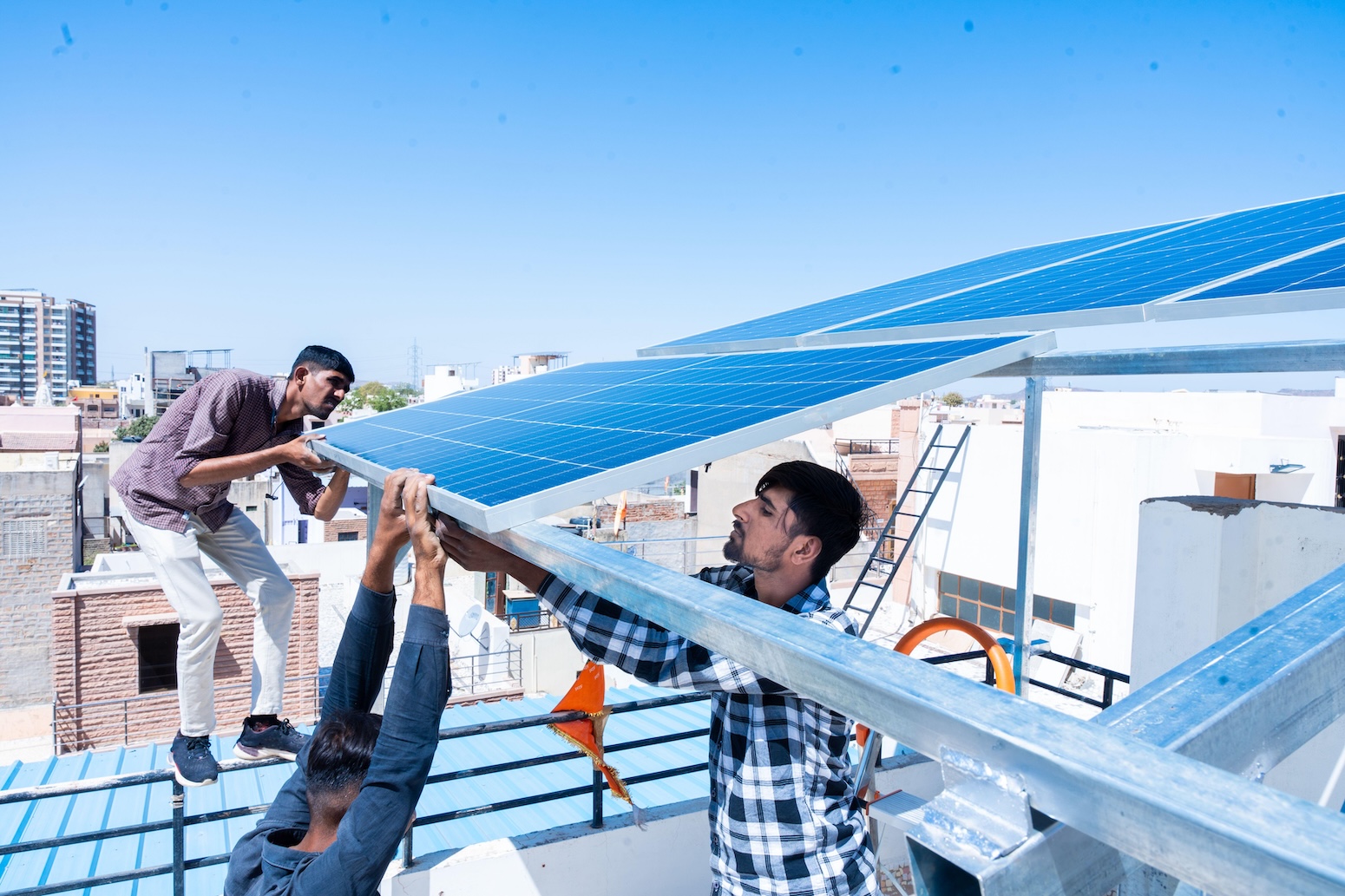In 2022, the Offshore Wind Energy Market reached a valuation of USD 38.65 billion, and it is anticipated to surge to USD 99.87 billion by 2030. The projected growth indicates a Compound Annual Growth Rate (CAGR) of 12.6% during the forecast period spanning from 2023 to 2030.
Introduction
Offshore-wind energy has become a pivotal player in the constantly changing world of global powers and an important pathway leading to sustainable, replaceable used materials. This sector has undergone significant technological development over the past decade, and demand is growing in line with the world’s pressing need for cleaner energy sources. By capturing the power of the wind in open water, offshore locations take advantage of high and stable winds, unlike onshore areas. In terms of efficiency, this advantage relates to energy production and the ability to site larger installations. Improved turbines, advanced floating foundations, and innovative grid integration systems have brought offshore wind energy to the potential of low-cost and sustainable power untampered by fossil fuels. The offshore wind industry is soaring. Around the world, governments and industry leaders are beginning to see the strategic value of offshore wind in meeting aggressive climate targets and cutting carbon footprints.
However, the development of offshore wind power has its challenges. The sophisticated engineering and logistics associated with offshore wind farms create their own set of challenges. Complex marine environments, logistical constraints, and high start-up costs are challenges stakeholders in the industry strive to overcome. Cooperation among governments, the private sector, and research organizations is the key to facing these hurdles and ensuring that offshore wind can continue its ongoing growth as a dependable energy source. With advances in technology and as economies of scale are gradually achieved, offshore wind power is undoubtedly about to take its place on the global energy stage–helpful to all nations keen to transition toward a more sustainable medium- and long-term future.
Innovations in Offshore-Wind Technology
The offshore-wind industry constantly innovates, seeking to improve efficiency, lower costs, and make better use of this environmentally friendly power source. One critical step in this direction is making wind turbines larger and more powerful. With better materials and design, these turbines provide more excellent wind power conversion and, therefore, higher output.
Floating wind turbines are another breakthrough innovation. In contrast to fixed foundation installations, floating turbines can be used in deeper waters, creating a new realm of possibilities for offshore wind. This fundamental discovery dramatically extends the potential geographic range for wind power, opening up prospects in unfavorable areas of seabed conditions.
Demand Drivers for Offshore-Wind Energy
There are several compelling reasons behind the growing popularity of offshore-wind power. With environmentalists lobbying and pressures from the need to cut carbon emissions, renewable energy has already had a faster-than-anticipated progression. Offshore-wind is a leading option for sustainability goals, with its immense potential and tremendous power generation capability.
However, government policies and incentives are a controlling factor driving the demand for offshore-wind projects. Many countries are implementing favorable regulations and offering incentives to stimulate offshore-wind farms. All these moves help to provide a good climate for public and private investment in the area.
In addition, rising concerns about energy security and the diversification of energy resources are also expected to spur a rise in demand for offshore-wind in particular. Wind is a reliable and abundant energy source, which can replace the consumption of fossil fuels and create a more resilient and sustainable distribution network.
Technology Developments in Offshore-Wind Farms
Offshore-wind technology has made great strides over the decades, not limited to turbine design. All of these developments- from grid connectivity to energy storage solutions and monitoring systems — boost the efficiency and reliability of offshore wind farms.
Another important area of progress is intelligent grid technology. These developments are essential to smooth the path onshore for offshore-wind energy. Through the use of smart grid technology, it is feasible to bring electricity onshore produced offshore. Such integration has the most comprehensive possible contribution from offshore-wind to the energy mix, enabling it to become a more integrated and stable part of the more significant energy infrastructure.
Intermittency is one of the difficulties linked to wind power. Energy storage has emerged as a vital area of research to overcome this problem. In particular, advanced battery technologies allow wind power to be stored using excess energy during peak conditions. This stored energy can be released during low-wind periods, creating a steady power source. By reducing the wildness of wind energy, these storage solutions are helping to make offshore-wind projects more stable and able to adapt to the grid’s needs.
Application Scope of Offshore-Wind Energy
Today, the use of offshore-wind energy is no longer limited to generating electricity. The application scope has expanded from industry to academia. With the spread of offshore-wind farms, they have become centers for sustainable economic activities, producing jobs and benefitting local communities.
Moreover, offshore wind energy is also being tested for its suitability in solving the water shortage problem. Furthermore, using offshore wind in desalination plants can produce a sustainable source of fresh water, especially in coastal areas strapped for water supplies. This dual-purpose application strengthens the multifunctionality and importance of offshore wind projects.
Developments Influencing the Offshore-Wind Energy Landscape
Top energy firms BlueFloat and Origin have teamed up to develop the world s largest offshore wind farm, with a 1.72 gigawatts (GW) capacity. This strategic alliance will bring together BlueFloat’s experience in offshore solutions and Origin’s open-minded approach to sustainable energy.
RWE, a world leader in clean energy, has secured the 684-megawatt offshore wind project. With the support of Mitsui, a significant trading and investment company in Japan, and Osaka Gas (the area’s leading energy supplier), that’s quite an achievement. It was brought into existence as part of a Japanese offshore wind auction and indicated the nation’s desire to increase its renewable energies.
Recently, RWE and Masdar agreed to an alliance to develop the 3 GW Dogger Bank South offshore projects jointly. Through this cooperation, RWE and Masdar will fully utilize the potential of these offshore wind projects to help reduce carbon emissions and promote environmentally friendly power generation.
Conclusion and Recent Developments
To conclude, the future outlook for offshore-wind energy looks bright as long as it is spurred on by constant innovation and rising demand in tandem with ever-improving technology. Its resilience in the face of challenges and willingness to adopt new frontiers make it a critical member of the international community working to develop clean, sustainable energy.
In the future, government support and the combined efforts of all interested in offshore-wind development, including industry and research organizations, will be vital in bringing wind power even closer. Continued research, development, and sustainability efforts are sure to result in a future where offshore-wind is part of our global energy world.



















Discussion about this post